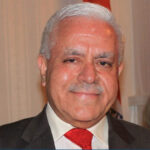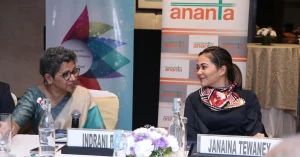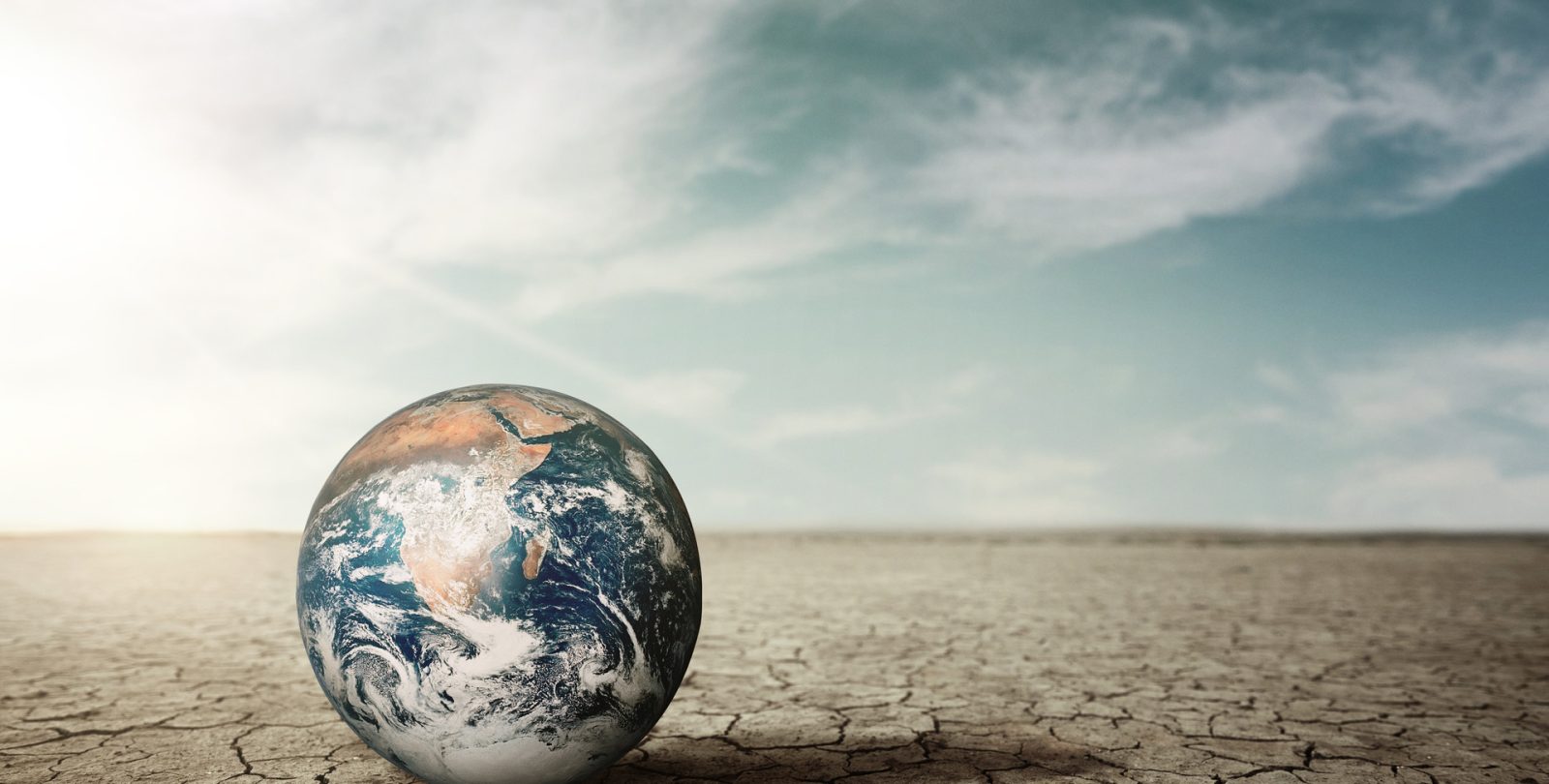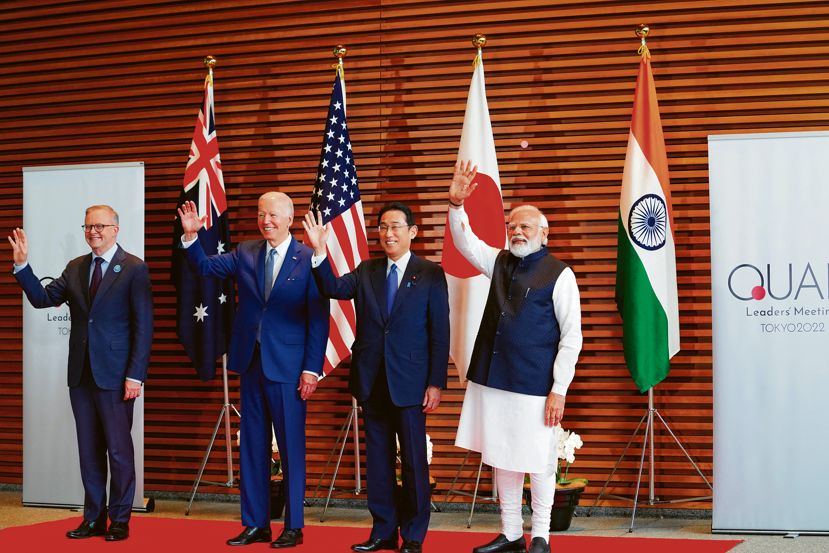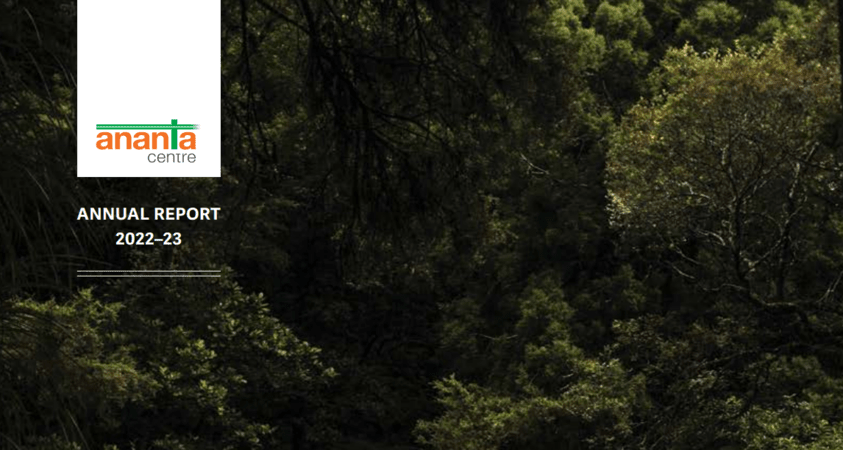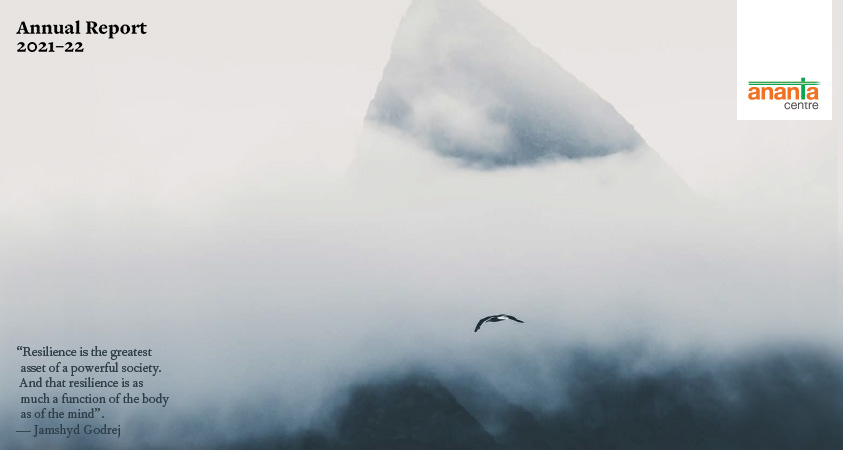HIGHLIGHTS
● Political Developments
● Economic Developments
● India-Central Asia Relations
Political Developments
As United States withdraws its last forces from Afghanistan, it is eyeing Central Asia more closely than at any other time since the early 2000s as a potential launching pad for residual counterterrorism operations in the region. But planning is complicated by these countries’ skepticism of Washington, which some in the region view as an unreliable partner. And also because Russia and China, both of which exercise considerable influence in Central Asia, are likely to oppose an increased U.S. military presence in their backyard.
U.S. needs overhead intelligence, surveillance and reconnaissance platforms in the region, which could include large, manned aircraft and drones. United States is reorganizing its counterterrorism posture to prevent the reemergence of terrorist threats. Washington has military cooperation and overflight agreements with all Central Asian countries except Kyrgyzstan, which ended them in 2014, closing a U.S. airbase in Bishkek. Uzbekistan hosted the American military during the initial years after the September 11, 2001, attacks but later expelled the U.S. from Karshi-Khanabad amid strong political disagreements over a violent 2005 crackdown on protesters in Andijan. From 2001 to 2015, Germany, a NATO ally, continued to use a base in Termez, Uzbekistan, which also supported Dutch forces in Afghanistan. From 2002 to 2013, France maintained a small base outside Dushanbe, Tajikistan.
Russian President Vladimir Putin recently acknowledged that Afghanistan’s neighbors have good reason to be worried about insecurity in the region following the U.S. withdrawal. China, too, has intensified its military role in the region, constructing facilities in Tajikistan and conducting exercises with Central Asian and Afghan forces.
While Russia and China may benefit from the security protection a U.S. base may afford, it would come at substantial risk to their geopolitical ambitions. Afghanistan is one area where Russia, China and the U.S. have significant mutual interests, but those interests don’t appear to be so substantial as to permit Washington to host a new base in the region. In addition to trying to reduce Russia’s dominance in Central Asia, the Americans are also seeking to diminish China’s influence as its biggest economic rival. Washington considers the best way to contain China’s rising economic power, as well as Russia’s growing pre-eminence in its southern neighbors, is through an increased military presence in the region.
Relatives of Kazakh people, who have been detained in so called “re-education camps” in China’s northwestern region of Xinjiang, continue to protest in Almaty in Kazakhstan. They called on Kazakh authorities to pressure China to release their relatives being “illegally” held in China. Several demonstrators picketing the Chinese consulate for many days were arrested by the police. Since late March, there have been daily protests within Kazakhstan against the Chinese government, both in solidarity with their ethnic and religious kin in Xinjiang, and out of fear of possible Chinese “expansionism.”
Finding a solution to the controversial Tajik-Kyrgyz border problems has proved intractable. So far, only 519 kms of the 970 kms Tajik-Kyrgyz border have been demarcated, and the remaining border area is considered disputed. In these areas, incidents have periodically occurred between the two countries. Recently a conflict took place which turned into an armed confrontation between the two states. During this first interstate one-day “water war” between the armed forces of the two countries, more than 50 were left dead, hundreds injured, thousands displaced from their homes with widespread damage to property. Kyrgyzstan says it suffered over 150 casualties including 37 deaths from the clashes that saw border troops open fire on each other and led to destruction of dozens of homes on both sides. The dead were mostly civilians, including two children, Kyrgyzstan said. Tajikistan said 19 of its citizens died in the violence. The fighting spread to other sections of the border. The authorities of the two countries were eventually able to stabilise the situation. The parties agreed on a ceasefire and the withdrawal of the armed forces from the border. However, two weeks later, another conflict arose.
The Tajik-Kyrgyz military border conflict was the bloodiest in post-Soviet Central Asia in three decades. Kyrgyzstan’s President Sadyr Japarov said he believed that “certain forces” are behind the destabilization of the situation on the Kyrgyz-Tajik border. Experts believe that the solution lies not only in the demarcation of borders but more importantly, in agreeing to the joint use of land and water resources and cross-border roads.
Uzbek President Mirziyoyev held separate talks by telephone with Tajik leader Emomali Rakhmon and Kyrgyz president Sadyr Japarov to ease the conflict.
Kremlin spokesman said that Russian President Vladimir Putin was “deeply concerned” by the clashes in two countries where Moscow maintains military bases and “always ready” to play a “mediating role.”
Kazakhstan, did not hide which of the two countries it supported. President Tokayev spoke with the leaders of both countries; however, he noticeably appeared to show more empathy toward his Kyrgyz counterpart expressing condolences and offering humanitarian assistance to the affected villagers in the Kyrgyz Republic. His subsequent call with Tajik President in contrast, resembled more of a fact-finding conversation. Notably, according to the official readout of their talk, Tokayev did not express any condolences or offers of humanitarian assistance to the Tajik leader.
At present, the main threats to the security of all of Central Asia and Russia are: the activities of international terrorist organisations in the Afghan border area; the spread of religious extremism; an increase in illegal drug trafficking; the threat of bioweapons; arms smuggling, human trafficking; cybercrime, and other transnational crimes.
At the second China plus Central Asia (C+C5) foreign ministers’ meeting held recently in Xi’an, China’s foreign minister called upon China and Central Asian countries to explore a new style of regional cooperation and build a community with a shared future. Foreign Minister Wang Yi offered to deepen regional cooperation on Covid-19 vaccines and the development of Chinese-funded infrastructure projects with his Central Asian counterparts. The six countries also discussed building a “grand Eurasian passageway of interconnectivity”, new Chinese government scholarships for Central Asia, agricultural cooperation, playing a “constructive role” after the withdrawal of US troops from Afghanistan, as well as cracking down on the East Turkestan Islamic Movement that Beijing has blamed for violence in Xinjiang.
Notably, one joint statement issued by the countries concerns their joint efforts to promote peaceful reconciliation in Afghanistan, demonstrating that the six countries will play a bigger role as a whole in maintaining regional peace and stability. Wang said that regional countries and the international community hope that “the future Afghan government could implement the moderate Muslim policy and avoid extremist tendencies, oppose all forms of terrorism and not allow the resurgence of terrorist forces in Afghanistan, develop good-neighborliness and friendship with neighboring countries and become a positive factor in promoting regional peace and stability.”
China has sought to step up cooperation with Central Asian nations on security, amid concerns in Beijing over a potential resurgence of terrorism in Afghanistan as the US withdraws its troops from the country. Beijing fears it could pose a threat to its Belt and Road Initiative projects in the region, and that instability in Afghanistan could be a breeding ground of Islamic fundamentalism that would spill over into China’s predominantly Muslim Xinjiang region.
An analyst has stated that SCO could now take a back seat to the new multilateral format with the five Central Asian nations, noting that Japan, South Korea, the European Union, US, India and Russia all had similar formats. He said it was hard for the Central Asian countries – which depended on China economically and for vaccines – to criticise policies in Xinjiang.
But while Beijing has stepped up its investments in Central Asia, there has been growing unease in the region over the expanding Chinese footprint. Polling by the Central Asia Barometer showed that while the governments in those countries welcomed closer ties with China, public opinion was mixed, with 30 per cent in Kazakhstan and 35 per cent in Kyrgyzstan viewing China unfavourably compared to single-digit unfavourable ratings for Russia in those countries. In spite of the pushback against China, there is no other country stepping in and replacing China when it comes to economic engagement.
Three joint statements were issued at the C+C5 meeting. The first was on the response to Covid. In the name of cooperation to fight pandemic, China tried to create markets for its vaccines and medical equipment and opposed “vaccine nationalism” and “vaccine divide”. Words in the joint statement were carefully chosen to project China as a mature and responsible nation, which is interested in safeguarding international fairness and justice and upholding multilateralism.
The second was on promotion of BRI. It aimed to promote the establishment of the sub-national cooperation mechanism, simplify cross-border flow of goods, and share experience on development and revitalization of small and medium-sized cities as well as rural areas. The emphasis on “high quality” of projects in the Statement implies that only Chinese companies would qualify for contracts.
The third was to get the support of five nations of Central Asia for enhancing the Chinese influence in Afghanistan some details of which have been provided above. China’s overall strategy is aimed at becoming the predominant political and economic power in the heart of Eurasia. To secure its grip in this region, China is trying to develop strong enduring leverages.
Wang chaired the multilateral meetings and also held bilateral talks with all countries to discuss issues covering fighting coronavirus, energy, security, the Belt and Road Initiative, trade, and law-enforcement against transnational organized crimes.
Kazakh President Tokayev visited Tajikistan and held discussions with his Tajik counterpart Emomali Rahmon on regional issues as well as perspectives on deepening cooperation in political, commercial, economic, cultural and humanitarian spheres. Aiming to increase the bilateral trade volume to US$2 billion in the next five years, the two expressed readiness to develop cooperation in areas such as establishment of joint production facilities in industrial field, infrastructure and logistics. They also decided to support Kazakh and Tajik diasporas living on the border of the two countries and to double the scholarship quota for students studying at universities.
In his discussions with Russian President Vladimir Putin in Sochi, Russia, Kyrgyz President Sadyr Japarov thanked him for paying attention to the Kyrgyz-Tajik border situation. He also thanked the Russian president for the assistance given to the people of Kyrgyzstan. He said that Russia is Kyrgyzstan’s chief ally and trade and economic partner.
The United Nations General Assembly adopted a resolution on the Aral Sea region declaring it a zone of ecological innovations and technologies and committing to promote greater research and scientific efforts to recover the region and improve its environment. Shared by Kazakhstan and Uzbekistan, the Aral Sea issue affects the entire Central Asian region of about 70 million people and causes multiple environmental, socioeconomic, health, and humanitarian challenges for the region and its communities. Since 2005, the 13-kilometer long Kok-Aral Dam, a US$85 million project initiated by Kazakhstan and mostly funded by the World Bank, managed to prevent water from going into the sands, giving some hope for the sea’s revival.
Kazakhstan offers citizenship to ethnic Kazakhs who emigrate to their ancestral homeland from abroad. About 1 million ethnic Kazakhs from Uzbekistan, China, and other neighboring countries have moved to Kazakhstan since the 1990s. Several people among the latest group arriving from Turkmenistan said that poverty, low wages, and a lack of freedoms in the country they left behind had played an important role in their decision to move to Kazakhstan. A key factor was however also a desire to reunite with family members who’ve already settled in Kazakhstan. New arrivals also say they hope to enjoy relative freedom in Kazakhstan, which — despite not being a model democracy – is less restrictive than Turkmenistan.
Kazakhstan has officially refused to grant citizenship to three ethnic Kazakhs who fled China’s northwestern region of Xinjiang for illegally entering the country as they fled persecution. They are three of several ethnic Kazakhs from Xinjiang residing in Kazakhstan after they were convicted for illegally crossing the Chinese-Kazakh border in recent years, but later given temporary refugee status in October 2020. The three have insisted that they fled China fearing they would be placed in so-called ‘’reeducation camps’’ for indigenous ethnic groups in Xinjiang.
Russia’s Federation Council (the upper house of parliament) has ratified a Russian-Kazakh agreement on defense cooperation, signed between the two countries’ defense ministers. According to the agreement, Russia and Kazakhstan will cooperate on a wide range of issues, including military education and training, supply of weapons and equipment, bilateral and multilateral drills and peacekeeping activities. The parties to the agreement will hold staff-to-staff talks and consultations on regional security and joint use of armed forces. The document emphasizes that it is not aimed against any country. The joint agreement stipulates that they maintain military intelligence cooperation but will not conduct intelligence activities against each other. Russia and Kazakhstan are also obliged not to pass the information they receive from each other on to third parties.
Kazakhstan has passed a law that prohibits the sale and leasing of agricultural land to foreigners and foreign companies. It was under pressure from opposition groups to do so. The government is hoping the legislation draws a line under an issue that has been a thorn in authorities’ side for years: fears of foreign powers, namely China, buying up the country. But with activists planning to protest against Chinese investment, it appears not everyone is satisfied. Back in April 2016, the government mooted legislation to simplify the process of selling land to private owners via a series of auctions. The idea was to open up the agricultural sector to investors and develop it. In response, people took to the streets to protest what they saw as a backdoor way of selling off Kazakhstan’s land to international buyers. The protests culminated with countrywide rallies — the biggest protests Kazakhstan had seen since gaining independence from the Soviet Union in 1991. The reaction unnerved then-President Nursultan Nazarbayev, who ordered a five-year moratorium on the issue, a freeze that is due to expire at the end of 2021. In February, President Tokayev proposed enshrining the ban into law. After some hiccups in April, when protesters once again took to the streets over the forest leasing, the law was amended in parliament and finally approved by Tokayev.
Kazakh President Tokayev signed into law the amendments to the elections law that will enable reducing the threshold for parties to win parliament seats from 7% to 5%.
Kyrgyzstan’s security services have detained Omurbek Babanov, who was prime minister in 2011-12, in connection with an investigation of corruption involving the huge Kumtor gold mine, which has long been a controversial operation in Kyrgyzstan because of alleged environmental violations and strong sentiment that the government should nationalize it. No details of the potential charges were provided.
Economic Developments
Bishkek’s partnerships with Canadian firms at the Kumtor gold mine have been contentious since operations began there in 1997. In recent months, the relationship with its current partner — Centerra Gold — has deteriorated into a showdown. Kyrgyz authorities have moved to take far greater control over operations — arguing the move is temporarily necessary because of environmental damage there. Almost simultaneously, a court slapped the gold mine with a US$3.1bn fine for environmental damage. Centerra has responded by preparing a legal case to fend off the fresh challenges over ownership. Centerra says it will “hold the Government accountable in the arbitration for any and all losses and damage that result from its recent actions against Kumtor mine if no resolution is reached.” Tactics deployed by populist strongman President Sadyr Japarov to wrestle the mine from Centerra’s hands have been especially aggressive and shocked foreign investors. Kumtor is the country’s single largest contributor to gross domestic product, accounting for 5-7% of GDP while the mine is also the nation’s largest taxpayer and employer. Observers were not surprised by the move to take control of the lucrative mine, regardless of the harm it does to Kyrgyzstan’s global image. Developments with respect to the Centerra Gold are likely to frighten all foreign investors but President Japarov apparently estimates that “he will gain more money from nationalizing the biggest gold mine than spending money on reforms that will not guarantee a lot of investments to the country immediately.” Centerra Gold, Kumtor Gold Company’s majority owner, has said that the goal of the move is to justify ongoing calls to nationalize the gold mine or force the Canadian company to leave. Japarov has been known since 2012 to be a strong supporter of nationalizing the Kumtor mine, which is located in his native Issyk-Kul region in the country’s northeast. He has accused Centerra Gold of corruption and damaging the local environment.
Recent standoff on the border with Tajikistan has also led to a wave of criticism of Kyrgyz President Japarov’s policies. Japarov hence wants to compensate for the support he’s lost and double down on nationalistic sentiment. Kumtor is a perfect target for this purpose.
While Central Asia does not rank high among China’s trading partners, accounting for around one percent of China’s total imports and exports, China is Central Asia’s most important trading partner. For example, according to the official statistics of each country in 2019, China is the largest trading partner for Kyrgyzstan and Uzbekistan by imports and is Turkmenistan’s largest trading partner by exports. China also ranks high as a destination for the imports and exports of other Central Asian countries. From 2015 to 2019, export of goods from Central Asia countries to China grew by 35 percent from US$15,054 million to US$20,276 million, with Kazakhstan, Tajikistan, and Uzbekistan reporting the fastest growth of over 50 percent. In the same period, exports from China to Central Asian countries increased 49 percent from US$17,563 million to US$26,207million. Uzbekistan reported the largest growth of 126 percent from 2015 to 2019.
Based on 2019 data, China is Kazakhstan’s second largest trading partner. Kazakhstan’s imports from China were at 17 percent (US$6,537 million) and exports to China at 13.6 percent (US$7,823 million). Trade between China and Kazakhstan has grown steadily over the past five years, expanding at an average annual rate of 16 percent.
The proposed railway project connecting Uzbekistan, Afghanistan with Pakistan will cost around US$ 5 billion. It will involve the construction of a 573-kilometer (356 miles) railway line with an annual transit potential of up to 20 million tons of cargo. The new transport corridor has the potential to improve connectivity between Uzbekistan, Afghanistan, Pakistan, India, and further to Southeast Asia.
Kyrgyzstan saw its GDP shrink by over 8% in 2020 and by another 9.4% in the first quarter of this year amid the pandemic’s impact. It is the second poorest country in Central Asia, being only slightly better off than Tajikistan. Food aid has lately been arriving from Kazakhstan. Much needed remittance inflows are expected to decline by 25% and unemployment level is projected to reach 21%.
According to a World Health Organization Report, the children of Turkmenistan are affected by a profound lack of food and a “high level of poverty.” The Report highlighted the “low level of obesity” among Turkmen children compared to their peers in neighbouring Central Asian states.
The China-Central Asia Gas Pipeline delivered over 39 billion cubic meters of natural gas to China in 2020. The pipeline runs from the border between Turkmenistan and Uzbekistan, passes through Uzbekistan and Kazakhstan and links up with China’s West-to-East Gas Pipeline in Khorgos. With a length of 1,833 km and a designed annual gas transmission capacity of 60 billion cubic meters, the pipeline has been operating for more than 11 years since it was put into service in December 2009. More than 336 billion cubic meters of natural gas has been transported via the pipeline.
India-Central Asia Relations
Uzbek Ambassador to India said that Uzbekistan has invited Indian companies to explore joint-venture opportunities in seven pharmacological free economic zones. The country is looking at attracting companies like Serum Institute, Bharat Biotech and other Indian vaccine makers to explore joint manufacturing and development of new vaccines with their peers in Uzbekistan. Apart from pharmaceutical sector, he also invited Indian companies to invest in chemicals, textiles, leather, information technology and telecommunication sectors in the Central Asian country. Uzbek Ambassador welcomed the Indian government’s proposal to open air corridors to Central Asian countries for transportation of fruits and vegetables, food and other agricultural products from Tashkent and other aviation hubs of Uzbekistan. It was stated by the Honorary Consul of Uzbekistan that both countries had agreed to implement 50 investment projects worth US$3 billion and India had also opened a credit line of US$448 million for four development projects in Uzbekistan, including road construction, wastewater treatment and information technology. Currently there are over 280 Indian companies operating in Uzbekistan and joint projects worth over US$650 million are under implementation.
Uzbekistan supplied 100 oxygen concentrators as well as remdesivir and other medicines to India to combat the raging second wave of coronavirus in India in April/May, 2021.
Two Kazakh aircrafts delivered emergency humanitarian assistance to India to fight the second wave of coronavirus pandemic which ravaged the country in April and May, 2021. This contained medical masks, respirators, and portable artificial lung ventilation devices.
Earlier, Kazakh President Tokayev addressed a message to PM Modi to express “deep solidarity with the Indian nation over the devastating COVID-19 surge in their country.” In 2020, India had sent hydroxychloroquine tablets to help Kazakhstan fight the pandemic.
Nurlan A. Zhalgasbayev assumed charge as Ambassador of Kazakhstan to India in place of Yerlan Alimbayev who returned to Nur-sultan as Vice Minister of Foreign Affairs.


